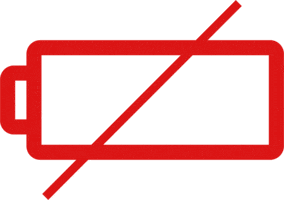Converting Units of Capacity Worksheets
Students should be familiar with the concept of volume. That is how much space something takes up. Capacity is similar, but it solely relies on container something resides in. Capacity is the amount that a container can manage to have. In most cases when we talk about capacity, we are looking at how much of liquid resides in some kind of container. These measures have a good level of diversity between different uses of units in the Imperial measurement system. You will use this skill in your kitchen whenever you are scaling a recipe up or down. These worksheets will help students learn to calculate capacity and convert between units of capacity.
Aligned Standard: 5.MD.C.3b
- Milk Jug Step-by-Step Lesson- How many pints are in a gallon?
- Guided Lesson - Quick conversions that all relate to jars.
- Guided Lesson Explanation - We bring cross multiplication to life for students.
- Practice Worksheet - We have you do standard conversions, but also you circle the greater amount.
- Matching Worksheet - It's like ten chefs need help with their recipes.
- Converting Units of Capacity 5 Pack - This is that pack of drill and skill that you see everywhere. Sorry it's so ordinary.
- Converting Capacity Units Lesson and Practice - A nice primer for students to have fun and learn with.
- Capacity Conversion Worksheet - 10 problems with lots of work space.
- Answer Keys - These are for all the unlocked materials above.
Homework Sheets
Just about every unit of volume I have ever heard of outside of units to measure oceans and lakes.
- Homework 1 - Example: 7 gallon = ______ quarts
- Homework 2 - Which amount is greater?
- Homework 3 - Convert the values as are needed.
Practice Worksheets
I tried to mimic the format that you would see on a test with these.
- Practice 1 - Tom wants water to wash car. How much water is needed?
- Practice 2 - Maria wants to make rice. How much water will he probably use to cook?
- Practice 3 - Convert each quantity into the given units. 9 gallons = _____ pints
Math Skill Quizzes
These are the units that you should know cold. I realize that many teachers are stressing memorization rather than cross multiplying.
- Quiz 1 - 62 ounces = _____ cups
- Quiz 2 - John wants to drive a car from his office to home. How much fuel is he mostly likely to buy from fuel station?
- Quiz 3 - One more straight up unit conversion for you.
Tips for Converting Units of Capacity

Ever since the world of physics came up with the idea of having SI units, an internationally accepted system of units, there has been a need for making those units small and large to measure quantities of smaller or larger magnitude. For example, to measure the width of a hair or the volume of an atom, we cannot use units like cubic meter. It would be really hard to express the magnitude of such a small scale using a unit relatively that big.
The most common measures of capacity normally center around the container they are found in. We are commonly converting between the capacity of these containers in liters or magnitudes of the measure of liters when we are working with the metric system.
For that purpose, we use prefixes that make units small or big as required. And with the use of prefixes, comes the need for conversions. Mili, centi, deci, kilo, mega, tera, etc are a few examples of prefixes. The conversion between these prefixes is quite simple. Each of these prefixes has a factor of ‘1000’ between them. To switch from one prefix to another, you wither divide or multiply it by 1000. Here is an example:
To express 1 liter in kiloliters, we divide it by 1000. The reason being that 'kilo' is a prefix that increases the magnitude of a gram; hence is a larger prefix. Whenever we move from a smaller prefix or standard unit to a larger prefix unit, we divide. Contrarily, when we move from a larger prefix or standard unit to a smaller prefix unit, we multiply. This same technique is applied in the case of units of capacity as well as all other cases. There are other conversions as well, such as conversions between different units of the same quantity, for example, meter, foot, and yard are all the same quantities for length.
Using the U.S. standard of measure for capacity that are based on the Imperial measurement system, we have a great deal more to remember. You will come across these when you are making soup in your kitchen. The most helpful three conversions to remember are:
1 cup = 8 ounces
2 cups = 1 pint
2 pints = 1 quart
The best way to process these types of unit conversion problems is to set them up as proportions and relate them to one another. You will directly relate the quantities of the proportion to one another. Then you will relate the unknown measure of capacity to the known measure. Matching up the two proportions, we can find the missing value. In chemistry they call this stoichiometry.